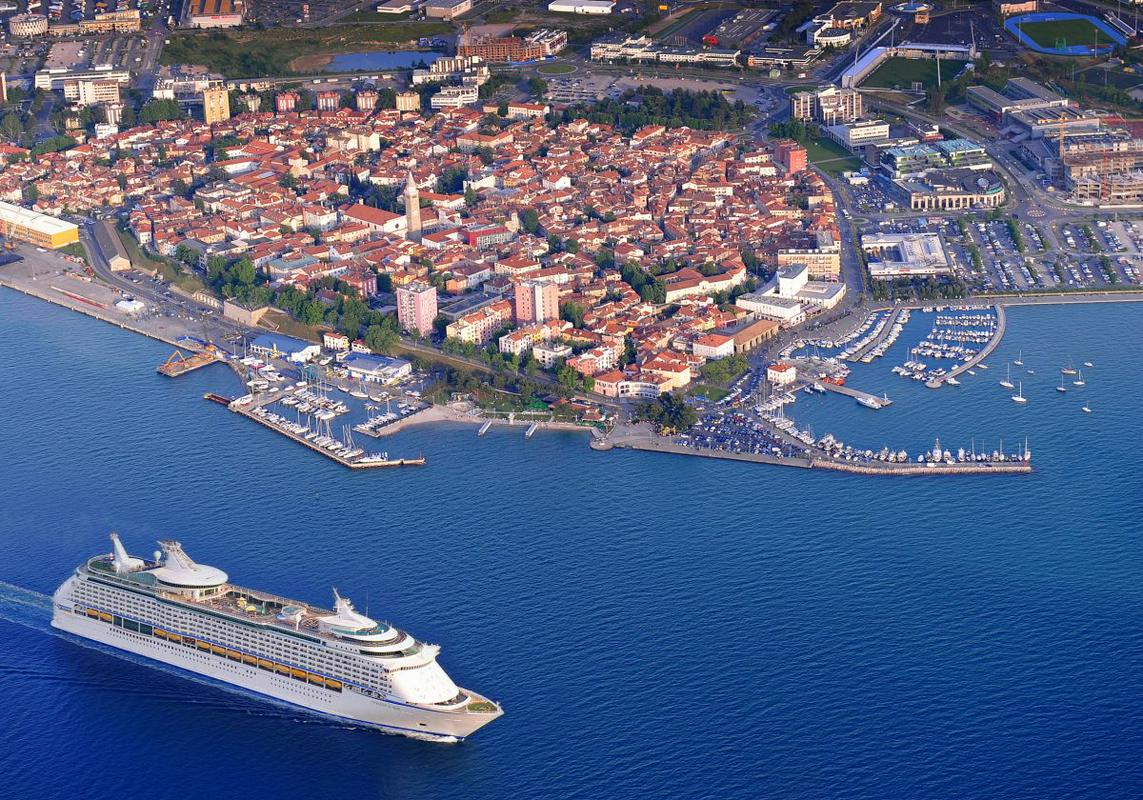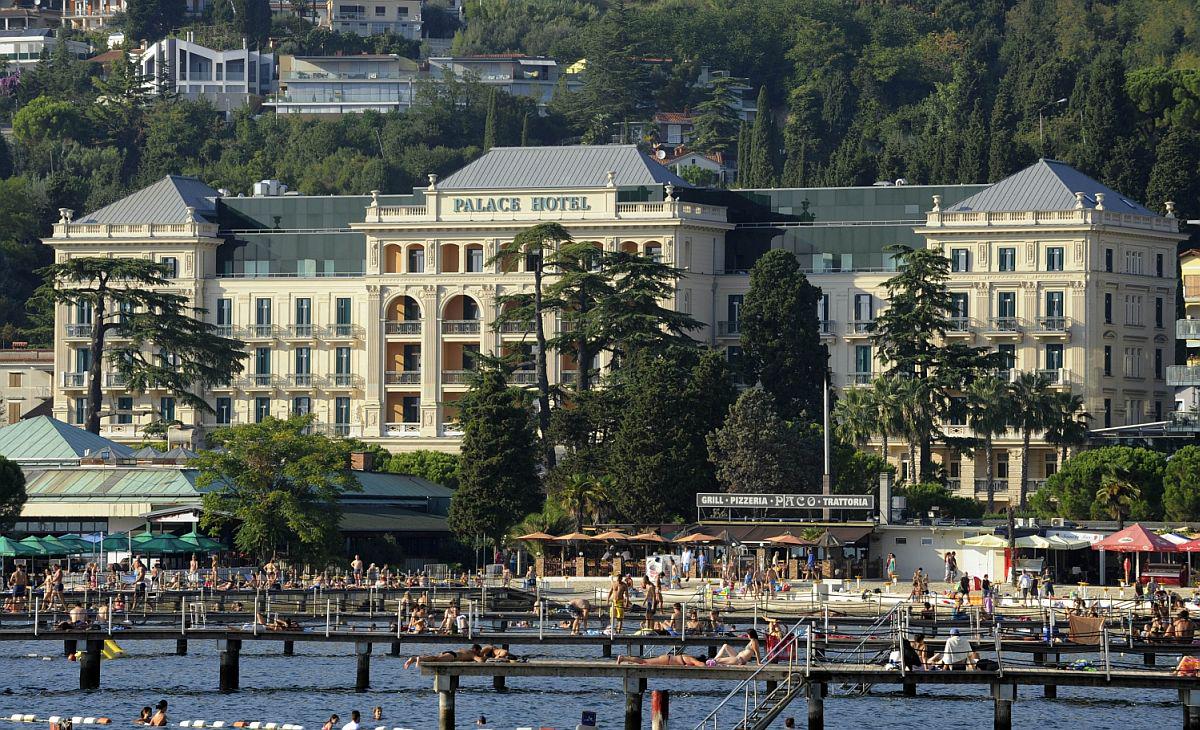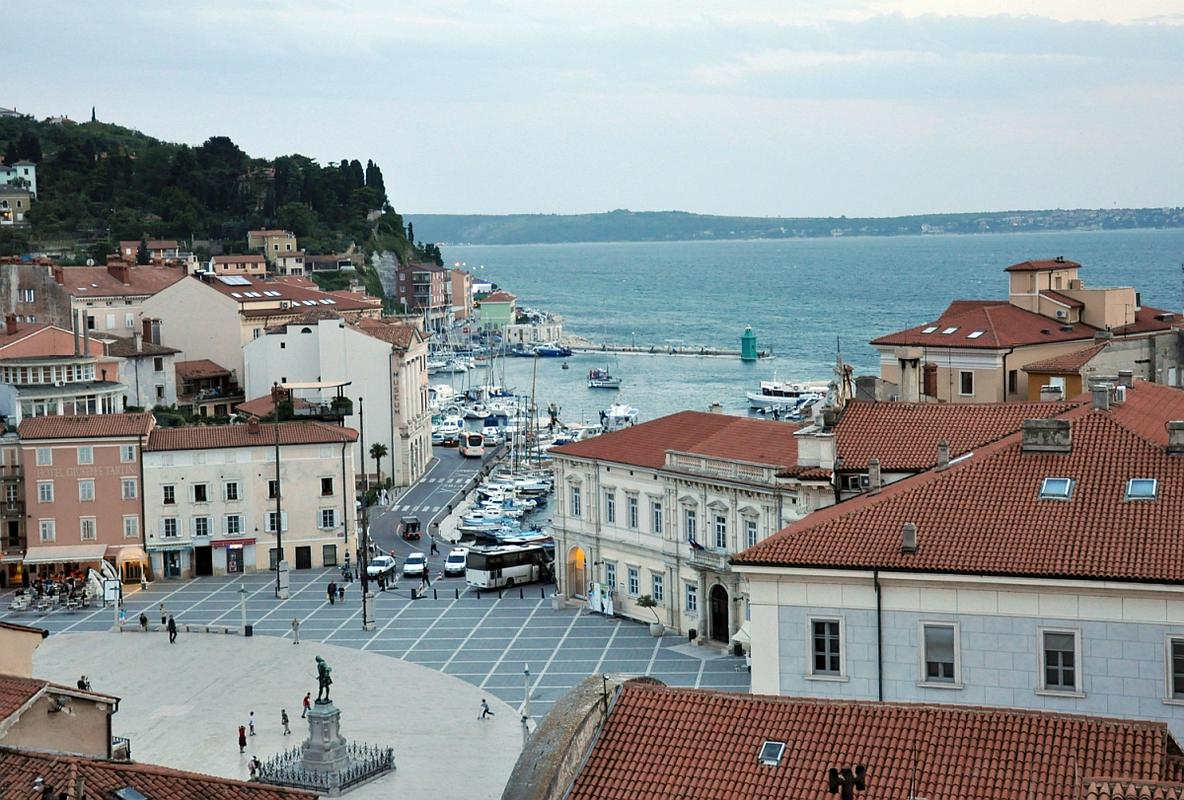


Nowadays, different venues from galleries and theatres to numerous outdoor events give these towns their respective cultural vibe. You can notice the fusion of different cultural influences just by listening to the conversations of locals, taste the treats on the Istrian market of Koper or stroll among the stalls at street antique fairs in Piran.
Interesting architectural, ethnological and other cultural heritage is showcased in two central museums, being the Koper Regional Museum and the Sergej Masera Maritime Museum of Piran, as well as with numerous smaller collections. Furthermore, you should not overlook the Museum of Salt Making, the Tartini house, the Sečovlje Salina and the Strunjan Nature Parks, the Socerb castle and the frescoes in Hrastovlje as well as the Forma viva. Throughout the year the following traditional events take place in the Slovenian Istria: the Asparagus Festival, the Salt-pan Workers´ Festival, the Festival of Refošk, From Winemaker to Olive Grower, the Festival of Olives, Wine and Fish, the Sagra Village Festival, the Fishing Holiday, St. Bartholomew's Festival, Sweet Istria, St. Martin's Day, and the Persimmon Festival.
Port town
The oldest settlement of the Koper island dates back to the times of the Roman Republic. Towards the end of the Roman Empire there was a large settlement located on the island. And in the late classical antiquity it was one of the strongholds of the Claustre Alpium Iularium defence system.
During the 8th century the Slavic people settled in the hinterlands of the Istrian towns. In 932, Koper established connections with the Venetians who ensured safer seafaring. However, they slowly subdued the town through various treaties. Until 1208, the town was ruled by the Istrian border counts and the Aquileia Patriarch. . During this period it retained its statutes. After a longer time of independence, Koper and other towns of Istria came under the command of the Venetians in 1279. In the 15th century, it obtained a privileged position in the commercial and administrative areas. At the turn of the 15th century money exchange offices, banks and craft workshops were established in Koper. More and more Slovenians who practised salt making, fishery and agriculture moved there.
It should also be noted that the plague ravaged the town in the years 1630/31, drastically reducing the town's population. The town's population finally recovered in the middle of the 17th century. The important role of Koper as a commercial power lasted until 1719 when Trieste and Rijeka were proclaimed as free ports. However, Koper lost its important maritime and trade role with the downfall of the Venetian Republic (1797) and completion of the Vienna-Trieste railway line.
Strong economical development of Koper started after the year 1954 when the London Memorandum was signed. In 1957 they started to build a port – the Port of Koper on the eastern side of the old town. Following that year, more and more Slovenians as well as people from other parts of Yugoslavia started moving into the town.
Recently, Koper was put on the map of cruise ships that choose this Mediterranean town as one of their tourist destinations. The town offers excellent public bathing areas and nearby there is also the Škocjanski zatok (Škocjan marshes) – a wetlands reserve rich in plant and animal life (220 bird species, 18 fish species, frogs, reptiles, etc.)
Slovenian Las Vegas
Its start can be traced back to Roman times. The archaeological finds give evidence to the numerous estates that were located on prestigious locations. Later on churches, monasteries, villas, houses of colonial farmers (colons) and hotels were erected. The most important role in the history of Portorož was held by the monastery of Saint Laurence where the Benedictine monks used highly concentrated sea water – brine and the black saltpan mud to treat rheumatic disorders, oedema and other diseases. The board of aldermen became aware of the possibilities for the development of tourism only in the 19th century. Following the year 1885, the arrival of many hotel guests dictated the construction of villas and guest houses. In addition, it also encouraged circles of intellectuals, bankers and entrepreneurs in 1890 to establish a joint-stock company for building a spa and bathing house in Portorož and erect the first grander hotel – Palace Hotel. Spa tourism was later interrupted by the World Wars I and II and, therefore, tourism of the town began to thrive more intensively only after the year 1970.
Sea, salt, wind, Mediterranean fragrances, palms, roses and evergreen plants, relaxation, entertainment and sociability are the words which you could most easily use to describe the atmosphere in present-day Portorož. The Central Maritime College Portorož, the Faculty of Maritime Studies and Transport and the College of Tourism and Hotel Management operate in Portorož. Moreover, the head office of the Splošna plovba Piran, International Shipping and Chartering, Ltd is located there as well.
A town of narrow streets
The old port town is located at the tip of the Piran peninsula. They started building villas already in the Roman period. However, denser settlement occurred only after the end of the Roman period. Slavic colonisation started at the end of the 6th century with violent Avaric and Slavic invasions into Istria. For a long time Piran held good relations with the Venetian Republic that provided protection, but the town also endeavoured for its independence and sought an ally in the town of Koper. In the 19th century Imperial Austria once more brought prosperity to Piran. This was mainly due to the salt-pans since Austria considerably expanded the Sečovlje salt-pans with the revival of salt production.
Currently, Piran is a tourist town. It retained its medieval layout with narrow streets and closely-built houses that ascend from the coastline in a cascading fashion towards the top of the town hill and thus give the entire ambient a typically Mediterranean character. The main square – the Tartini Square – got its name after the composer Giuseppe Tartini who was born in Piran. Tartini was a violinist, composer and musical educator who composed more than 300 musical pieces, some of which belong among the best musical creations of the 18th century. However, the town has one additional peculiarity: the modern open air sculpture collection on the Seča peninsula opposite Portorož. The international Forma Viva Sculpture Symposium was established in 1961 under the initiative of the Slovenian artists Jakob Savinšek and Janez Lenassi.
Piran mainly offers boutique tourism. The narrow streets hide many small boutiques with artworks. The town often hosts various exclusive concerts and shows on the Tartini Square or in one of the winding streets.
And although you might think that the Slovenian coastline is short, you will find out that it is extremely picturesque while travelling along it. Besides Koper, Portorož and Piran you will be also astonished by other towns: Izola, Strunjan, Lucija, Ankaran, Sečovlje, etc. The Slovenian Istria is opening its doors to everybody and wins everyone's heart.
Tanja Glogovčan, SINFO

































































